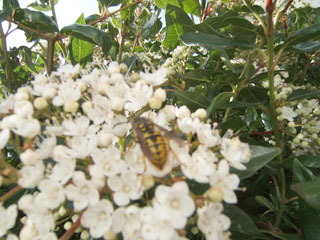 We’ve had a fair amount of fine, warm – and even sunny – weather recently and the bees have been taking full advantage of it. They are desperate to gather fresh pollen and nectar to feed the ever-increasing amount of young brood that the queen has been laying.
We’ve had a fair amount of fine, warm – and even sunny – weather recently and the bees have been taking full advantage of it. They are desperate to gather fresh pollen and nectar to feed the ever-increasing amount of young brood that the queen has been laying.
As a result, their winter stores are diminishing rapidly and need to be topped up. I have been feeding fondant to all my colonies as an emergency back-up but the opportunity to get out and gather fresh forage is far more beneficial to them.
I am hoping that, with the amount of pollen they were able to store in the autumn, the bees are in a far better state of health now than they were this time last year.
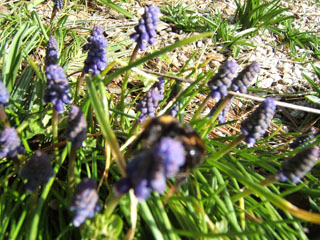
Certainly my colonies all appear to be strong, with large numbers of bees both inside the hive and also flying on fine days. It is, of course, too early to open the hives and do a detailed inspection, so it’s all about what one can read from watching the bees and what one can see through the perspex crown-board.
The first lot of fondant I placed on the hives has been totally cleared so I am now topping up with a second batch, but whilst the bees certainly appreciate this boost to their reserves, let’s hope the weather allows them to continue gathering naturally-occurring forage, as this contains minerals, amino acids, lipids, proteins, etc which fondant does not.
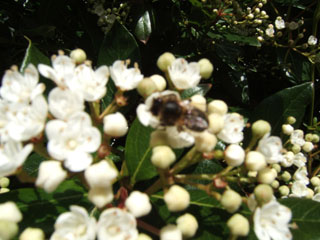
Whilst playing in the garden with our grand-children last Wednesday, we heard a loud humming, almost roaring, sound from a viburnum bush in full sun at the front of the house. It was absolutely covered in honeybees! Brilliant! I also saw a queen wasp (who is no more!) and a queen bumble-bee. Both these queens had come out of hibernation, thinking that the warmth and the sun indicated Spring had arrived.
They were foraging for nectar and pollen to build up their strength so that they could make a start on building their new nest for the season. A few days earlier I had found a somewhat bedraggled queen bumblebee on the ground – wet, cold and unable to fly.
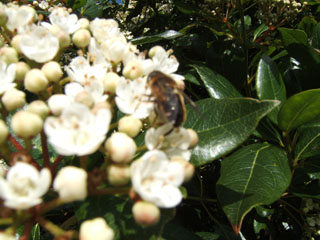
I took her into the house, fed her some sugar syrup, and after about 20 minutes by the Aga she had warmed up and dried out enough to be able to fly again, so I released her outside and off she went, happy to still be alive. It’s a very dangerous time for all these insects – if they get caught in a rain shower or the warm sun is clouded over for any length of time, the insect chills and either can’t use its wet wings or can’t produce enough energy to fly.
So if you find a bumblebee or honeybee washed down on the ground or shivering, consider taking it indoors, placing it in a clear, plastic yoghurt pot or similar, and putting it in a warm spot – near the oven or a radiator. Don’t cook it, just gently warm it!
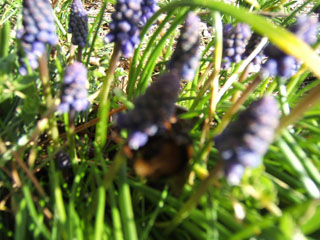
These insects will not sting you if you handle them gently, as you are not threatening their colony or even them if you’re gentle, and we need every one of them for pollination purposes (well, I guess I make an exception with the wasps, and wouldn’t try to save a queen, as they can attack and destroy my bee colonies in the autumn, so I don’t want the queens establishing nests.
But having said that, the number I find and kill is a only a very small proportion of the number that successfully establish, so I don’t lose any sleep over that).
Apart from cleaning and repairing equipment ready for the up-coming season, there is not a lot for the beekeeper to do at this time of year – though I am currently studying for one of the British Beekeepers’ Association exams later in the month. Wish me luck!
Colin Rees – 01872 501313 – colinbeeman@aol.com

